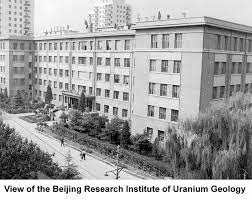The South China Morning Post recently reported that nuclear scientists in China have discovered rich uranium deposits at shallow depths below the surface of the Earth. The discovery is being touted as a breakthrough for the China’s national security. It could also change the global scientific community’s understanding of formation of uranium deposits. This could provide a new avenue for the detection of uranium deposits worldwide.
Massive amounts of industrial-grade uranium deposits were discovered at depths previously thought to be impossible. The new deposits will increase China’s estimated total reserve of uranium one thousand percent to more than two million tons. If these claims are true, that would put China roughly at the same level as Australia, which is one of the world’s most uranium-rich countries.
The team behind the discovery used state-of-the-art technology and equipment to explore depths of up to 10,000 feet which they claim is six times deeper than most of China’s uranium mines.
The China National Nuclear Corporation issued a statement on its WeChat social media account on Tuesday that said, “This world-leading project is a major breakthrough for our country.”
The new deposits will help China meet its growing demand for nuclear power as the country shifts toward the use of nuclear fission for its energy needs as it aims to cut its carbon dioxide emissions. Uranium is also used in nuclear weapons production. The new deposits will reportedly help the country increase its military’s nuclear arsenal.
Li Ziying is the director of Beijing Research Institute of Uranium Geology. He claimed the discovery challenges widely held beliefs on uranium deposit formation.
Uranium was thought to concentrate mainly in shallow, geophysical stable areas. However, some of the largest deposits found by China in recent years are more than 5000 feet below the surface of the Earth. The regions in which they were found have experienced large tectonic movements. Long-standing theories would suggest that it would be impossible for uranium deposits to form at that depth.
Li and his colleagues believe that tectonic collisions might cause uranium to rise from the mantle before being trapped in small “hotspots” thousands of meters below the Earth’s surface.
The researchers utilized an airborne, ultra-sensitive remote sensor to detect tiny traces of heat produced by uranium from below the ground. Once such heat was detected, they used a drilling machine with a specially made bore head to obtain small samples from the depths. Finally, they used artificial intelligence to increase the speed of their data analysis.
The new method of uranium detection could be employed globally to help other countries find hidden uranium deposits. Nuclear power, until recently maligned due to the problem of radioactive waste and potential for catastrophic disasters, has seen a resurgence in recent years fueled by the world’s need to shift away from fossil fuel production.
The global uranium market is currently quite volatile due to the unstable nuclear market. Considering that there are plenty of known uranium reserves in the world, it is an open question of whether this Chinese discovery will have an impact on global uranium prices and supplies.
Nuclear Reactors 1037 – China Discovers Vast Uranium Deposits Deeper Than Was Thought Possible

